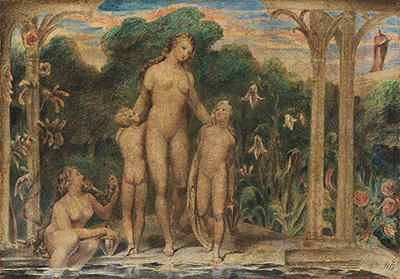During the 1800s, William Blake released a series of engravings that were based on biblical narratives with Bathsheba at the Bath being one of them. The painting has drawn little commentary with most of the critiques directed at the artist's style. This article aims at explaining this painting by William Blake.
About Bathsheba at the Bath by William Blake
Bathsheba at the Bath is part of the 50 biblical paintings commissioned from William Blake in 1799. It portrays Samuel's second book in the Old Testament. One evening, David got off his bed and took a walk on the roof of his palace. When standing at the roof, King David saw a naked woman that was taking a bath, and the lady was beautiful to look at. That lady was Bathsheba, the wife of Uriah. David, who is shown in the picture's upper right corner, arranged the death of Bathsheba's husband and fathered a child with her.
Meaning of the Painting
This is a depiction of 2 Samuel where King David saw the naked Bathsheba from the room of his palace taking a bath. The two children, a male, and a female were included by Blake, but are not mentioned in the text. However, Bathsheba did bear a son to David after Uriah was killed. The imagery in the painting is sensuous and represents the influence of Correggio or Parmigianino whose works were known to Blake. Whereas Prophet Nathan says that David siring a son with Bathsheba was the will of God, David said that it was a result of too much wine and heat stroke. Although they had a mutual attraction, if they had an affair, they would be breaking the law of Moses.
David ordered that Uriah be put in the front of the battle and troops withdraw thus leaving him to die. After news of Uriah's death, David organises a marriage with Bathsheba. In the end, David takes responsibility for his sin and is punished by God. He repents and God forgives him. He then proceeds to live with his wife, Bathsheba. The anomalous presence of two children is contradictory. This is because the Bible does not record any children that were born to Bathsheba before David abducted her and there are no such children that are present in the previous versions of the episode. This possibly signifies Maachah, David's previous wife, who had two children – Tamar and Absalom. The woman who is at the left of the painting is Bathsheba regardless of her visually subordinate posture.




